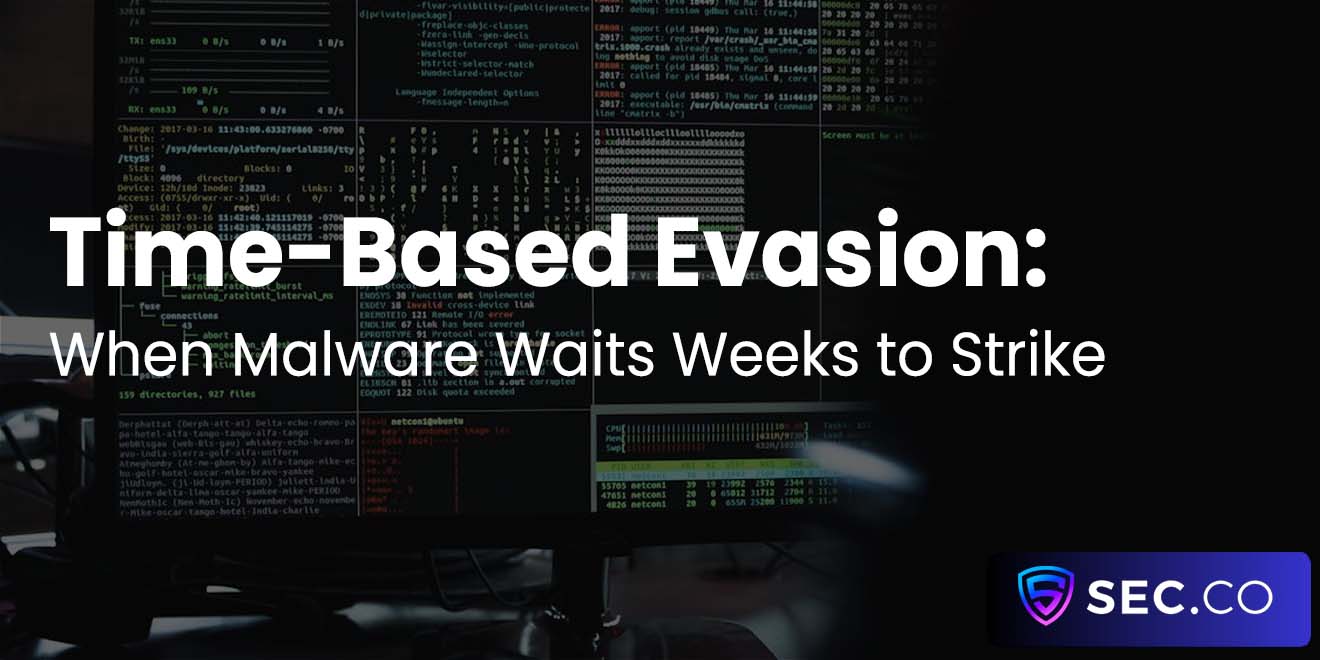Binary Provenance and SBOM Verification in Practice
Software supply chains are noisy, fast, and occasionally chaotic, and that is before an attacker starts poking around. When teams ask how to trust what they run, they usually reach for two ideas: provenance for the binary and a Software Bill of Materials for everything inside it.
Used together, they let you move from a shrug to a statement. This article explains how to make that shift in practice for a site focused on cybersecurity & cyberdefense, with an emphasis on real workflows, plain language, and the occasional smile to keep things human.
Why Binary Provenance Matters
If a binary shows up at your door without a credible history, you do not own it. It owns you. Provenance answers the simple question that decides whether you should run code on your crown-jewel systems: where did this artifact come from. In practice, you want a chain of evidence that links the executable back to specific source commits, a defined build environment, and a verified set of inputs. Without that, every control that follows feels like theater.
Provenance also shrinks the blast radius when something goes wrong. If a suspicious library version becomes toxic, provenance lets you identify which builds pulled it in and when. Instead of trawling logs for days, you pivot on signed metadata and get to containment before the coffee is cold.
What Binary Provenance Actually Is
Provenance is structured evidence. Think of it as the artifact’s passport. It records who built the binary, which source revision they used, which compiler and flags touched it, which dependencies were present, and how the build system behaved. The proof is only useful if the metadata is tamper-evident, so cryptographic signatures sit at the center.
Good provenance is not a monologue from your CI system. It is a set of attestations that can be checked by anyone with the public keys and the artifact. You should be able to verify the history without trusting the pipeline that produced it in the first place.
Practical provenance relies on a few pillars. The source of truth is an immutable commit that is signed by a developer identity with keys managed sensibly. The build environment is described precisely, ideally as code, and it should be hermetic enough that two clean runs produce the same bits.
The builder signs the outcome and the metadata, and the signatures are anchored to a transparency log or a ledger so that secret rewriting is difficult. None of this is sci-fi. It is plumbing, and plumbing is best when it is boring and always on.
SBOMs Without the Buzzword Fog
An SBOM is an inventory. Nothing mystical, nothing scary. It lists the components packaged into your artifact, including their names, versions, hashes, and licenses. Different formats exist because engineers love options. SPDX and CycloneDX are the two most common. Both can capture the hierarchy of dependencies and both allow you to cross-reference vulnerabilities and licenses later.
The mistake many teams make is treating the SBOM as a static PDF that gets filed away. The SBOM is only helpful if it is generated by the build, signed like any other attestation, and compared against reality. Anything else is a postcard from a vacation you never took.
Detail counts, but depth matters more. If your SBOM lists only top-level packages, you get a false sense of safety. Transitive dependencies do the real damage, so verification must traverse the entire tree. You want precise versions, not vague ranges. You want hashes of the exact files, not hopeful names. When your SBOM contains hashes for each component and those hashes match what is in the binary, you stop guessing and start knowing.
Verification Workflows That Do Not Collapse
Verification is the choreography that turns provenance and SBOMs into confidence. The secret is to make the checks automatic and repeatable, so no one has to remember a magic command at 5 p.m. on a Friday.
Establish Identity
Begin with identity. Verify that the developer commits are signed by expected keys and that those keys map to people or service accounts you actually recognize. Then verify that the builder identity, usually a dedicated keypair or a short-lived certificate, signed both the artifact and the provenance record. If the keys are unfamiliar, your pipeline might be haunted. That is not a fun genre.
Bind Source to Build
Next, tie the artifact to the source. The provenance should name the repository, the branch or tag, the exact commit, and the build recipe. Rebuild deterministically whenever possible and compare hashes. If reproducible builds are not feasible for some components, capture all inputs and their checksums. The goal is to make it implausible for a malicious or misconfigured builder to smuggle in untracked code.
Compare SBOM to Reality
Now compare the SBOM to the artifact. Extract the packaged components, compute their hashes, and match them against the SBOM entries. Focus on transitive dependencies. If the SBOM says a project contains a specific version of a library and the binary contains a different one, raise a signal. Either your SBOM is stale or the build drifted. Both are fixable, but only if you know.
Detect Tampering and Supply Chain Risks
Finally, validate signatures, check transparency logs for inclusion, and consult vulnerability and license data against the SBOM entries. The SBOM makes risk look like a to-do list. Do not let that list gather dust. Tie the results to policy and act on them during the build, not after deployment.

Practical Tools and Standards
Standards and tools evolve, but the pattern stays steady. You generate provenance as a signed attestation. You create an SBOM in a well-known format that carries component hashes. You publish the artifact, its provenance, and its SBOM together, ideally in the same registry. Consumers pull all three and verify before allowing the artifact to run in higher environments.
Choosing Formats and Cryptography
Pick a signing approach that your team can operate without tears. Short-lived certificates reduce key management pain. Transparency logs add public accountability, which makes stealthy edits harder. For SBOMs, choose a format your scanning and policy tools understand. Store hashes using strong algorithms. If your corporate standard still tries to bless a tired hash function, retire it with a cake and a kind goodbye.
Storage and Distribution
Artifacts belong in a registry that supports storing signatures and attestations alongside the image or package. Keep the bundle together. If the artifact moves, the provenance and SBOM should move with it. Use immutable tags for promoted builds. If a tag can be rewritten, provenance loses its bite and your auditors lose patience.
Handling Common Pitfalls
Supply chain security rewards the patient and ambushes the careless. A few patterns appear over and over when verification enters the real world.
Hash Drift and Reproducibility
If two clean builds of the same commit produce different hashes, you cannot verify the artifact with comfort. The usual culprits are timestamps baked into binaries, nondeterministic ordering of files, and network calls during the build.
Tame the build with pinned toolchains and hermetic steps. Fix time to a stable value or strip timestamps where possible. The first reproducible build that finally matches feels like finding your keys in the exact coat pocket you promised yourself you would use.
Transitive Dependencies and Ghost Entries
SBOMs sometimes lie by omission. A build tool reaches over the network and grabs a helper library that does not appear in your dependency lockfile. The SBOM faithfully reflects the lockfile, so the ghost never shows.
Solve this by eliminating network access during the build and by generating SBOMs from the final artifact, not only from the manifest. When the SBOM is computed from what was actually packaged, ghosts become visible and very boring.
Proprietary Blobs and Closed Toolchains
Closed components complicate verification. If you cannot produce a hash for an embedded firmware blob or a proprietary driver, document the exception with precision. Include the vendor’s signature and version, and isolate the component behind strict policy in runtime. Exceptions must be rare, explicit, and tracked. Otherwise the exception list turns into a laundry basket you never empty.
Human Factors and Process
People are not weak links. They are links, full stop. Give developers fast feedback in pull requests when signatures are missing or SBOMs fail validation. Celebrate a clean verification pass. When you make the secure path the path of least resistance, the team follows it without complaint. When you hide errors behind cryptic logs, they will invent side doors. That is not malice. That is momentum.
Integrating Verification Into CI
Treat verification as a gate, not a suggestion. A build that fails provenance or SBOM checks should not graduate to staging. The point is not punishment. The point is that a failing build is a draft of a problem you can fix quickly.
Policy Gates
Define clear policies. For example, require signed commits from known keys, signed provenance tied to a known builder identity, and SBOMs that account for every packaged component. Put those policies in code and make the gate messages specific. Vague errors are how good intentions die.
Attestation Lifecycle
Attestations are living records. Rotate keys with grace. Keep transparency proofs. Archive SBOMs and provenance with the artifacts for the long term, so that investigations months later do not depend on ghost servers. Plan for revocation. If a key is compromised, you need a way to distrust old signatures without shredding your history.
Exceptions and Escape Hatches
You will need an override sometimes. Make it rare and noisy. Require documented justification, time-boxed approval, and a plan to remove the exception. Nothing motivates a fix like a bright timer counting down near a release manager’s desk.
Measuring Success
Verification is not theater when it changes behavior. Measure the time it takes to diagnose an artifact issue before and after the system is in place. Track how many builds require exceptions and whether that number trends down. Audit how many components in your SBOMs lack hashes or vendor signatures and push that toward zero. Success looks like fewer surprises and faster recoveries, not a pile of green checkmarks that nobody reads.
Metrics That Matter
Prefer lead indicators over vanity metrics. A reduction in unsigned commits matters more than the number of reports generated. The percentage of artifacts rebuilt deterministically tells you whether you can trust your hash comparisons. The average age of exceptions tells you whether you are paying down risk or sweeping it under a rug.
Audit Readiness
Audits are less dramatic when your evidence is tidy. With signed provenance and SBOMs stored next to the artifact, you can answer questions with a pointer instead of a novel. Auditors love that, and honestly, so will you.
Future Directions
The road ahead is practical and exciting. Builders are learning to produce provenance by default. Registries are getting better at storing attestations as first-class citizens. SBOM generation is moving closer to the artifact, which removes a lot of the guesswork that made earlier inventories brittle.
Hardware Roots of Trust
As hardware roots of trust become easier to use, signing keys can live in safer places and builds can assert stronger identities. When a hardware device vouches for the builder and the signature, attackers have to work a lot harder to fake your history.
Runtime Attestation
Verification does not stop at deployment. Runtime attestation lets systems prove they are running the expected binaries with the expected measurements. Combine that with your provenance and SBOM records, and you get a loop that starts at commit and ends at runtime checks that refuse to launch mystery code.
Conclusion
Binary provenance and SBOM verification do not need to be grand gestures. They need to be reliable habits baked into the build and the promotion pipeline. When you sign what matters, store it where consumers can find it, and verify it before anything important runs, you replace hand-waving with evidence. The payoff is practical. Incidents shrink. Investigations finish faster. Teams trust the bits they ship.
Most of all, you push risk back toward the edges where it belongs, and you keep your attention on the work you actually want to do. That is the quiet victory of supply chain security, and it is available to anyone willing to wire verification into the way code moves.
Trusted by the Web Community
See what we written lately
Request an invite
Get a front row seat to the newest in identity and access.
















